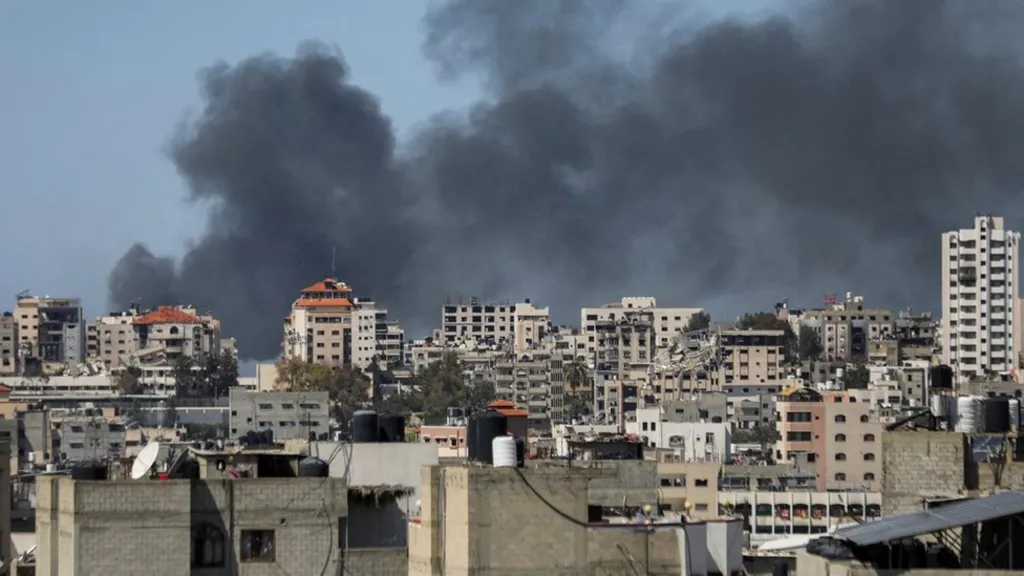Recently, US Secretary of State Antony Blinken left on a diplomatic trip to the Middle East, mostly to look over Gaza’s post-war strategy. Blinken’s visit is crucial in addressing the urgent problems of long-term peace, stability, and reconstruction in the region in the wake of the conflict.
-
Recognizing Gaza’s Post-War Situation
After years of strife and misery, there has been a terrible increase in violence in Gaza, which has left the area in ruins and claimed many lives. Israel and Hamas’s erupting battle destroyed Gaza’s infrastructure, forced thousands of inhabitants from its homes, and made humanitarian issues worse.
-
Blinken’s Targets and Objectives
Secretary Blinken’s visit to the Center East highlights the US’s obligation to working with discourse, advancing compromise, and tending to the main drivers of the contention. His essential targets incorporate evaluating what is going on, organizing global guide endeavors, and drawing in with local partners to graph a way towards economical harmony and improvement.
-
Conciliatory Endeavors and Drives
During his visit, Secretary Blinken is supposed to hold undeniable level gatherings with key partners, including Israeli and Palestinian pioneers, as well as delegates from adjoining nations and global associations. These political endeavors expect to encourage trust, assemble agreement, and investigate roads for conciliatory goal.
-
Amazing open doors and Difficulties in Gaza’s Recreation
With how much harm caused during the fight, reconstructing Gaza is a tremendous endeavor.But it also offers a chance to settle long-standing issues, lessen suffering, and provide the foundation for Gaza’s people to live in stability and prosperity in the future.

-
Foreign Assistance and Assistance
The world community has united to assist Gaza in its attempts to recover and rebuild. It is anticipated that Secretary Blinken’s visit would inspire further international aid and support, expressing sympathy with the Gazan people and reiterating the shared commitment to creating a brighter future for all.
https://youtu.be/xwLMJH86Qxc?si=7NYY_KpmgnO2ObWi
-
Humanitarian Issues and Initiatives
In the middle of the destruction and debris, humanitarian issues are quite apparent. The topics of Secretary Blinken’s talks will include urgent humanitarian requirements, such as access to necessaryservices, medical care, and education, in addition to tackling the root causes of disadvantage and poverty.
-
The region’s stability and security
Preventing any escalation of violence and instability in the region requires ensuring security and stability. In order to support long-term peace and stability, Secretary Blinken will look at methods to improve institutions, foster confidence-building initiatives, and boost security cooperation.
-
Regional Dynamics and Engagement of Stakeholders
The Gaza conflict has wider regional ramifications, since the actions of neighboring nations and regional players greatly influence the course of events. Through the impact of important players, Secretary Blinken’s discussions aim to constructively harness regional dynamics in order to further peace and reconciliation.

-
Prospects for Peace and Stability in the Long Run
A glimpse of optimism for a better future is provided by Secretary Blinken’s visit, even though the path to peace may be difficult and protracted. Through cultivating there is a genuine chance to establish the groundwork for long-term peace and stability in the area via encouraging communication, fostering understanding amongst people, and tackling the underlying causes of conflict.
-
Public Views and Responses
The whole community is eagerly following Secretary Blinken’s visit, and opinions about the likelihood of peace and reconciliation are not all that similar. Some people are still doubtful about diplomatic attempts, while others see Blinken’s involvement as a move in the right direction toward ending the hostilities and addressing the Gaza humanitarian catastrophe.
-
The United States’ Function in Resolving Conflicts
The United States, a major actor in the Middle East peace process, is essential in promoting communication, mediating deals, and offering leadership globally. The United States’ dedication to advancing stability, security, and prosperity in the area is demonstrated by Secretary Blinken’s visit.

-
Next Moves and Approaches
Looking ahead, all parties concerned must maintain their dedication, tenacity, and collaboration in order to achieve peace. A larger diplomatic effort to address the underlying causes of violence, foster reconciliation, and create a brighter future for future generations is just getting underway with Secretary Blinken’s visit.
-
In summary
An important step has been taken in the direction of resolving Gaza’s post-war issues and furthering the cause of regional peace and stability with Secretary Antony Blinken’s visit to the Middle East. Secretary Blinken desires to give the establishment to a superior future for individuals of Gaza and the bigger Center East by communicating with significant players, coordinating worldwide drives, and rehashing US obligation to tact.
-
FAQs
What objectives does Secretary Blinken have as a top priority for his excursion to the Center East?
Surveying the post-war situation in Gaza, organizing worldwide aid projects, and connecting with provincial players to propel harmony and dependability are the targets of Secretary Blinken’s visit.
What part does America play in the peace process in the Middle East?
To advance correspondence, intercede arrangements, and show administration in the district’s endeavors to achieve harmony and soundness, the US is fundamental.
How can the world community help Gaza with its restoration efforts?
Difficulties to revamping Gaza incorporate fixing harmed foundation, settling helpful issues, and settling well established hostilities among Israel and Hamas.
What are the chances of Middle Eastern peace and stability lasting a long time?

